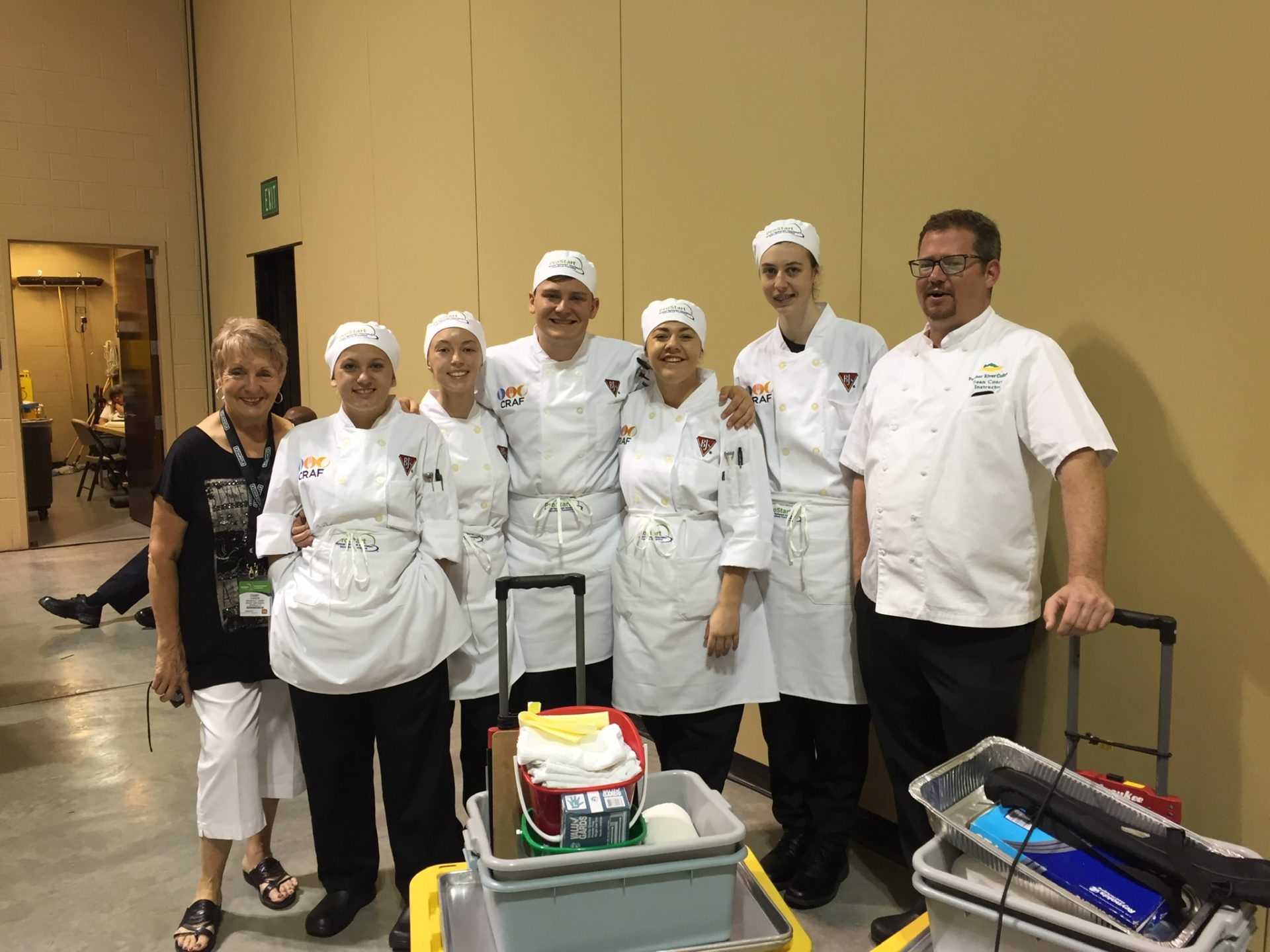Community College instructors set the course for a strong workforce
News Center – June 2021
When it comes to building better structures, Chad Scott knows it’s all about starting with a strong foundation.
As Executive Director for Shasta Builders’ Exchange, Scott tends to apply that same philosophy to essential workforce skills. And with California’s workforce facing a shortage of some 1.5 million educated employees, the foundational skills built through career education are proving critical to the state’s structural integrity.
“Our North State community desperately needs men and women to join the skilled trades,” says the Executive Director, who works with Shasta College to improve pipelines in HVAC and other Advanced Manufacturing trades. “However, recruiting and retaining quality trainers … remains one of the greatest obstacles.”
The consequences are clear: a bottleneck in statewide productivity potentially costing billions in lost revenue. The solution? Less obstacles… more instructors.
“Faculty are critical,” says Josh Sweigert, Regional Director of Retail, Hospitality & Tourism. “Aside from the important instructional component, they’re the champions of the program.”
In his sector alone, half of college culinary departments are facing the need for new faculty as veterans retire. Sweigert is hosted at Lake Tahoe Community College, where the death of a beloved chef and instructor has put the development of the crucial culinary and hospitality program on hold.
“Aside from the pain and loss of a tremendous partner and colleague, that school has had to go back to square one in the middle of the pandemic,” explains the director.
The need for skilled workers – and thus quality instructors — also pervades the business world, where employers had trouble finding qualified applicants even before the pandemic. “It’s to the point where it’s affecting operations,” warns Sweigert.
It’s a familiar story to industry partner Alycia Harshfield, who depends on her region’s two-year CTE programs as Executive Director of the California Restaurant Foundation.
“Community colleges play a vital role in preparing and training skilled talent for the restaurant and hospitality industry,” says Harshfield. She considers associate and certificate holders “a viable resource” when it comes to job-ready employees, especially as need surges.
As businesses reopen, Sweigert says, “It’s an amazing opportunity right now to get involved in guiding and training the next generation of workers.”
Sean Conry, Director of Culinary at Feather River College, couldn’t agree more. What began more than 15 years ago as a side gig to network with potential talent became a lifelong passion for cooking in the classroom.
He says teaching is “surprisingly rewarding,” especially his class at the county jail. “It’s really fun because I’m helping these guys and gals for when they get out to seek employment.”
It’s an energizing experience, especially for industry veterans accustomed to the workforce grind. For Michael Frigm, Culinary Instructor at Cosumnes River College, becoming a professor was more than a hard-earned break, it “was one of the best career moves I ever made.”
He looks forward to improving the lives of his students and community every day. From firing up lifelong careers to fueling the workforce, he’s turned his passion into a profession. Plus, the perks are pretty tasty.
“I love the lifestyle that comes with this job,” says Frigm. Long shifts and limited paid time off were commonplace in his industry. Now, he appreciates a month of winter break… not to mention the whole summer off. “For the first time in my professional career,” he says, “I have a true life-work balance.”
Demand for enthusiastic instructors extends to the other end of the CTE spectrum as well. In the emerging Forest Health & Fuels Program at Feather River College, Coordinator Jon Dvorak says the opportunity for teaching is wide open, and the workforce demand is great.
“There’s an endless amount of jobs, whether it’s federal, state or private industry,” explains the instructor. “People don’t understand how good of a job it is.”
Dvorak himself is a product of career education, having started at age 16 in the Forest Service’s junior ranger program. He’s worked in the industry for 15 years before teaching at UC Berkeley, and he is excited for the chance to instruct at a community college. “It’s way more intimate,” Dvorak explains. “Smaller community colleges are way easier to … get a lot more accomplished.”
As part of the program, students will use chainsaws, light prescribed fires, and get the real-world training they need to make the state fire safe. For someone who has dedicated his adult life to his industry, nothing could be more satisfying.
“It’s a really balanced, well-rounded job,” says Dvorak. “That value you get from passing knowledge on … I wouldn’t trade it for anything.”
Programs like this are vital, according to industry partners, and instructors like Dvorak are needed more than ever.
“The workforce demand for fuels management professionals is very large already and is expected to increase substantially,” says Joe Restaino, Senior Environmental Scientist at CAL FIRE. He believes FRC is filling a significant need:
“Faculty members like Jon, who has both a professional and academic background… are key to not only administer training but also to help mentor students into a variety of resource management roles.”
As wildfire threats increase, the industry partner adds, “Investments into fire and fuels training now is simply essential.”
Community colleges are known for their nimbleness, rapidly creating new programs like the Forest Health & Fuels Program to meet evolving workforce demand. Yet, it is the dedicated faculty who are key to CTE’s success.
For instance: the proposed HVAC technician and sheet metal fabrication training at Shasta College. Working closely with excited industry partners like Shasta Builders’ Exchange, the program managed a cohort of about 30 incumbent workers at launch.
The joint training program was “almost indispensable for our local industry,” according to Scott.
“It was just [down] to finding an instructor,” adds John Schmidt, Regional Director for Advanced Manufacturing. “That’s already six months ago — we’re dead in the water … There’s just a massive shortage of people out there.”
When a shortage of workers cycles into a shortage of teachers, the effects can ripple from the Oregon border to the Valley.
“The workforce demand in the greater Sacramento area is extremely high,” says Jonathan Zeh, Department Chair of Mechanical-Electrical Technology (MET) at Sacramento City College, which trains HVAC technicians. “As we recover from the COVID-19 restrictions, it’s only going to get worse.”
While the Sac City program is currently lucky enough to have enough faculty, Zeh says its ability to expand is hampered by a bottleneck in the talent pipeline: “We could easily find ourselves not having enough instructors.”
Unique problems require unique solutions. And for HVAC professor Richard Gentry, that means engaging potential instructors early.
“We’re working on eliminating that shortage of faculty by talking to our students, and ideally, even creating a more diverse workforce,” says the nine-year veteran instructor.
As an alum of the program himself and an HVAC professional for 31 years, he knows first-hand the rewards of teaching. “I get to see past students come in all the time, and it’s great to see them advance through their careers and lives and realize that I played some small part in that.”
One such success story is Carissa Ramirez, who is beyond thankful for her professor’s dedication: “He’s helped me network. He’s always been willing to write a letter of recommendation and to make a phone call.”
Ramirez says she’s living proof of the power of learning from engaged educators. Today, she’s a stationary engineer in charge of two buildings for the State of California.
She explains, “I wouldn’t have the state job I have in the HVAC industry if it weren’t for the professors at MET.”
Originally an unsatisfied preschool teacher with a four-year degree, Ramirez returned to community college in an effort to transcend that ill-fitting career. She was able to take classes at no cost, thanks to a MET alumni scholarship. Now, the grad’s “dream job” as an HVAC professional is helping pay off the leftover debt from her university degree.
It wouldn’t have happened without the instructors who pushed her to take the employment exam and gave her the foundation to get her foot in the door. Now, she says, she’s looking to pay it forward, possibly becoming an instructor in the program that gave her so much.
Says the Sac City College grad, “I would love to go back there and teach … to be like Gentry and give back.”
Sources:
California’s Need for Skilled Workers, Public Policy Institute of California
https://www.ppic.org/publication/californias-need-for-skilled-workers/












